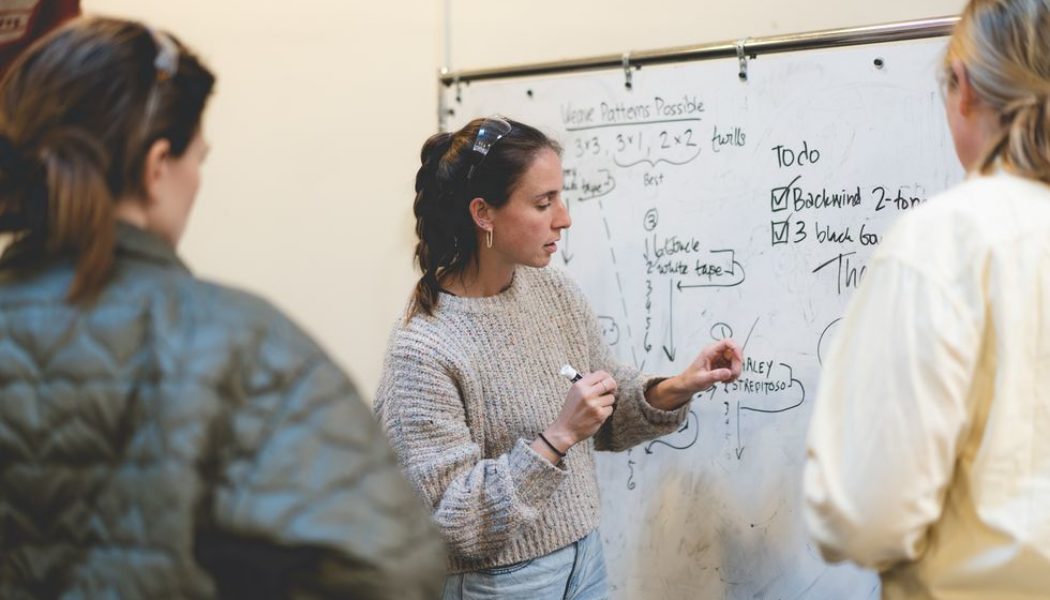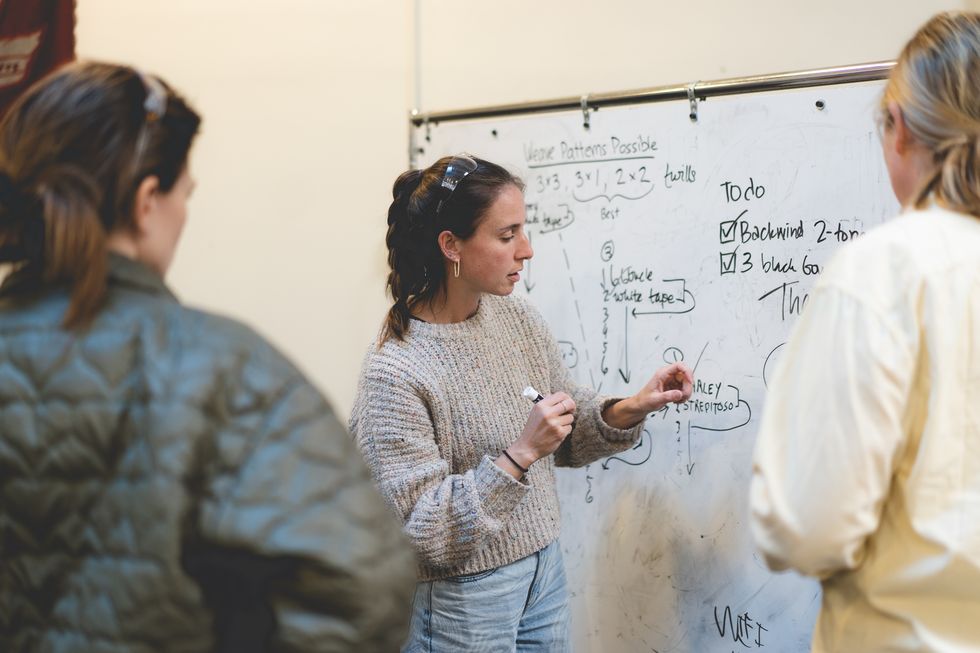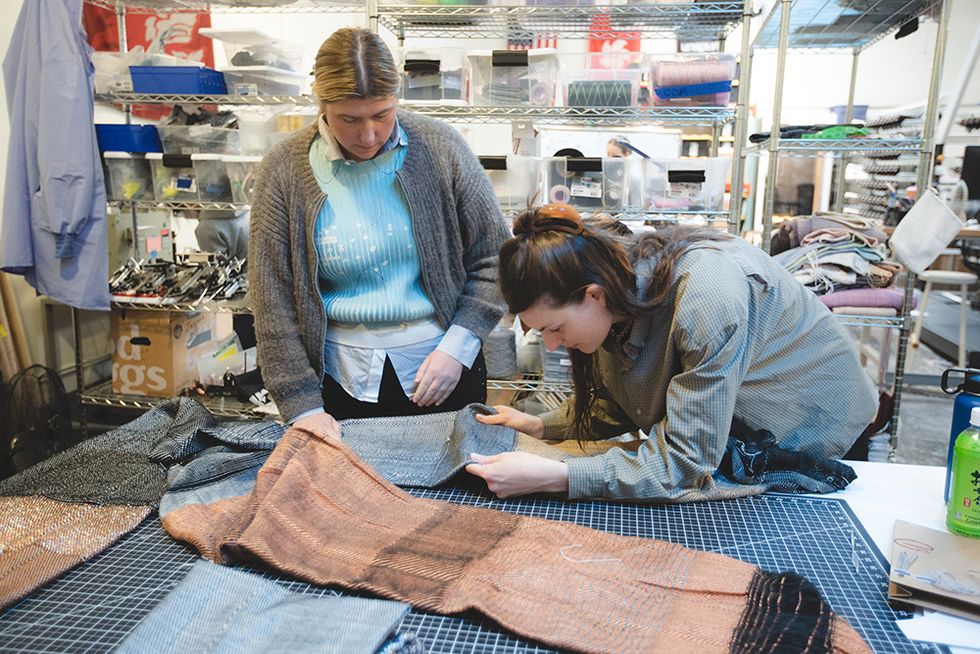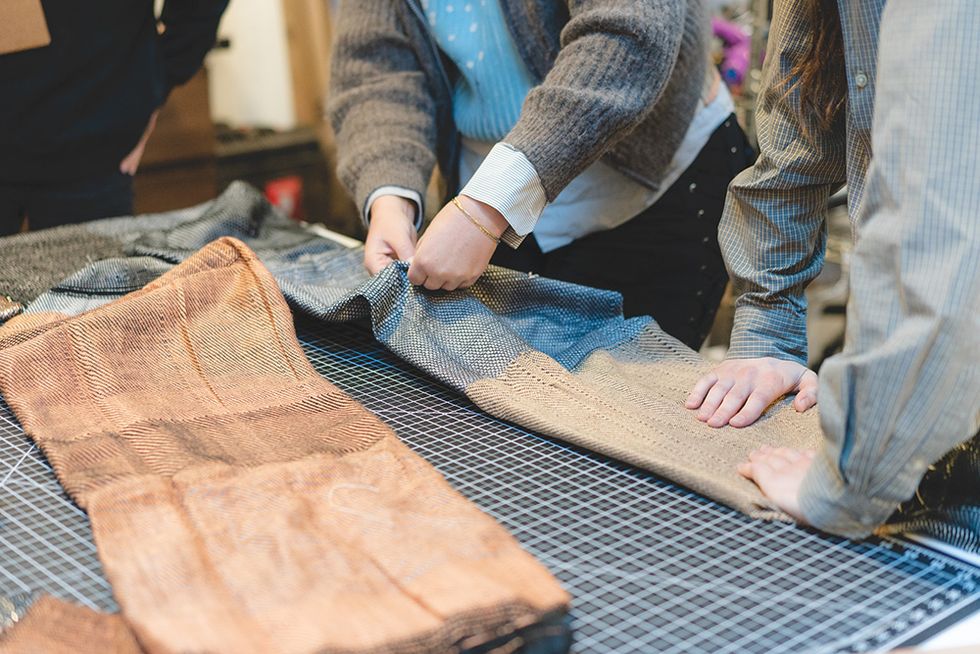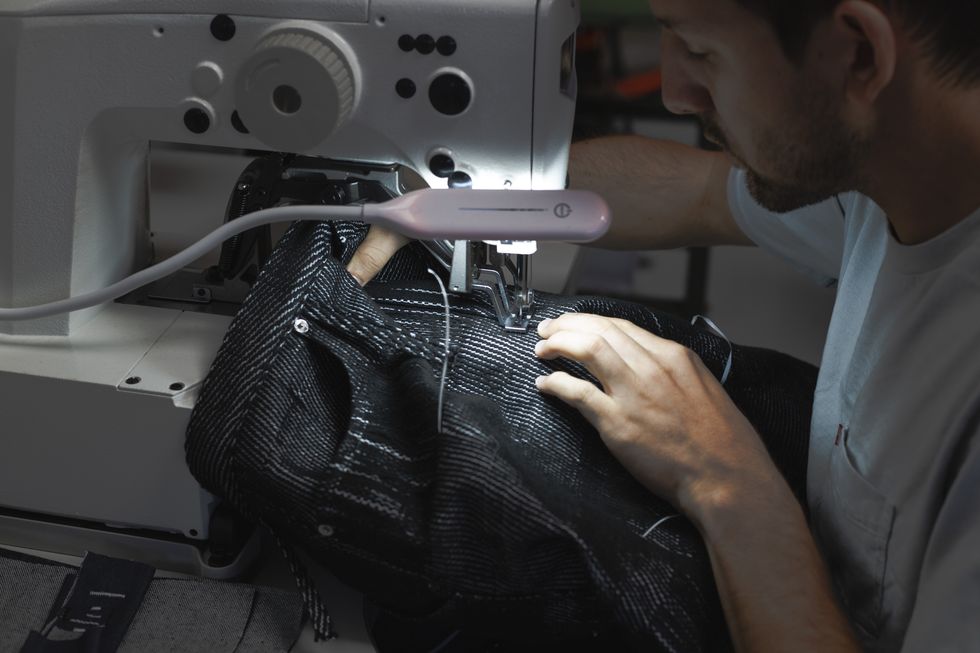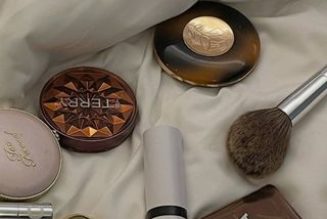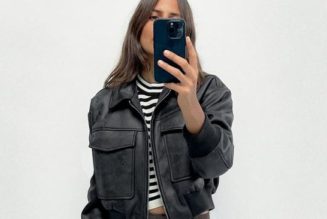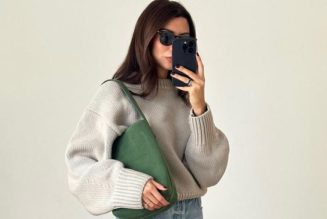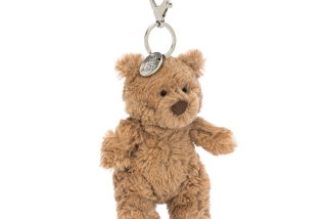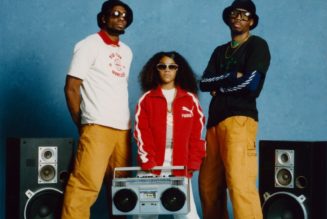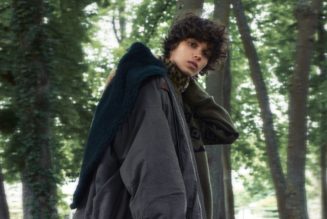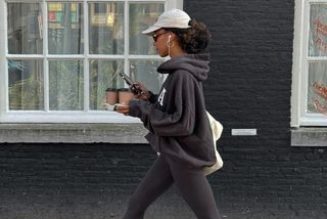Clothes designed for a fashion week aren’t always designed for life off the runway. And the ones that incorporate an element of technology—LED lights embellishments, built-in speakers, spray-on fabric—are doubly guilty of being designed mostly for the ‘gram.
Eckhaus Latta’s spring 2024 runway at New York Fashion Week involves an element of wearable tech. But clickbait clothing, it is not.
Four Eckhaus Latta looks incorporate a collaboration with Unspun, an Oakland, California-based fashion technology company. The firm worked with Eckhaus to develop 3-D woven garments that are the first of their kind to appear on a major runway.
“I think throughout the years, there have been a lot of tech fashion collabs that didn’t really make sense in everyday life, which is really important to me,” Zoe Latta told Bazaar in an interview in August, just over a month before this weekend’s show. To her, Unspun’s 3-D weaving “is not using technology to change the way you function in clothes. It’s using technology to make [them] better.”
Named “Vega,” Unspun’s proprietary tech can weave a full pair of pants in the time it takes for an average fashion show to start and finish—that is, about between five and ten minutes. The device pulls in around three thousand yarns at once in a cylindrical, automated loom.
That’s maybe more engineering jargon than you bargain for at fashion week, but it matters. A New York Fashion Week staple electing for a futuristic design process like this has big implications for how we shop luxury fashion and who can shop for it. Unspun’s technology allows labels obsessed with craftsmanship and quality to make orders on demand without fabric waste (or the itch to burn what they don’t sell through).
The technology also allows brands to set up microfactories for small batch orders, reducing emissions created from the convoluted, multi-step supply chains that typically bring us our clothes. This considered production won’t come at the cost of inclusivity: The loom creating each garment has a highly adjustable diameter, meaning that collections can fit a much broader size range than traditional cut-and-sew, without risking unsold excess inventory.
Of all the designers showing at New York Fashion Week, Unspun co-founder Beth Esponnette said her team targeted Eckhaus Latta specifically for its first 3-D weaving partnership. First, because co-founders Zoe Latta and Mike Eckhaus are known for their inventive manipulations of textiles and and deadstock materials. Second, because of the “inclusive and open-minded nature of the brand.”
“They saw potential that maybe we didn’t even see in [our technology] because of the creativity that they brought,” Esponnette said.
Latta said that the technology was hard for her to wrap her head around before she saw it firsthand. Then she and her team traveled to Unspun’s Oakland headquarters, to take in the cavernous warehouse hosting Unspun’s proprietary machines and lay the foundations for their eventual collaboration. “We spent two days playing with the machines and I could have spent four months [with them],” she said.
The spring 2024 pieces they created—four pairs of pants and two sleeves—are knit with custom materials that Eckhaus Latta and Unspun developed together over the course of a year through rigorous trial and error. The fashion brand’s team would bring ideas for materials relevant to their vision; with Unspun, they would try weaving each one on the machine until they found the right balance of aesthetic vision and wearability. (Woven leather was cut from the lineup because the resulting weave felt too heavy for a spring collection. Conversely, a wool-like textile was axed because it wasn’t sturdy enough to weave and wear.)
Pants that will make their way from the runway to shelves come in an ballooning wide-leg blend of plastic tape and cotton that’s surprisingly soft to the touch and a shimmery, tweed-like streptiso; runway showpieces include an ultra-wide leg pant woven from a sturdy, stands-on-its-own twine and a plastic with dangling floats. Those last two examples maybe lack real-world viability, but they show off the full range of Unspun’s capabilities.
Experimentation on the level of thread composition and count is both entirely new to Latta and reminiscent of her label’s earliest collections, when budgets were low and material resources were scarce. “Using unconventional things that we found and trying to make them work has always been a foundation to our process,” she said. Then and now, it’s helped Eckhaus Latta unlock new modes of creativity: “I think the more restriction, the better in a lot of ways, in terms of how you can really refine something.”
“We’re twelve years old and not to say, stuck in our ways […] but it’s much harder to change the course of something once there’s momentum in it,” she reflected. Working with Unspun, she added, brought a “fresh and new” perspective to the overall process.
There are still several “if’s,” “maybe’s,” and “potentially’s” where Unpun’s tech implementation is concerned beyond the debut on Eckhaus Latta’s runway. There’s the matter of scale: Unspun has signed “several multi-million dollar contracts” with retail partners according to a press release, but transferring production over to a new system will inevitably take time. And there’s the matter of cultural buy-in. Some designers may be skeptical of replacing handmade, cut-and-sew designs with automated 3-D weaving in spite of its benefits.
Backstage at their fall 2023 show, Mike Eckhaus told Bazaar the previous collection considered two questions: What does an Eckhaus shopper really want to wear, and how can the designers make what they want forward-thinking? Asking again for spring 2024, the answer is clothing that’s made in a better way, but no less expressive.
Editor’s note: This post was updated to correct the total number of Eckhaus Latta x Unspun looks that appeared on the runway.

Fashion Commerce Editor
Halie LeSavage is the fashion commerce editor at Harper’s BAZAAR. Her style reporting covers everything from reviewing the best designer products to profiling emerging brands and designers. Previously, she was the founding retail writer at Morning Brew and a fashion associate at Glamour.
